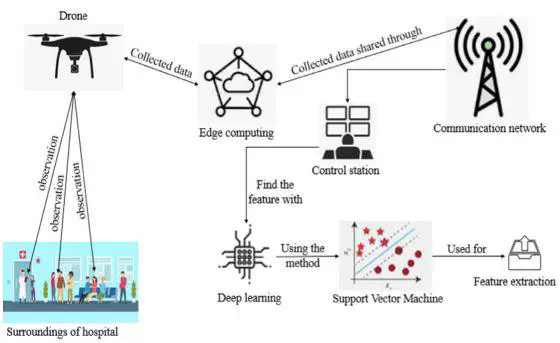Maliciously roaming person's detection around hospital surface using intelligent cloud-edge based federated learning
 Image credit: Multimedia Tools and Applications
Image credit: Multimedia Tools and Applications
Abstract
As an innovative strategy, cloud-edge-based federated learning has been considered a suitable option in supporting applications in the internet of things that detect the roaming person features around the hospital surface. By connecting the internet with physical objects and transmitting information to detect the issue of maliciously roaming person features, the Internet of Things with the cloud-edge based federated learning enables the integration of the natural world and the data world, thus making life more innovative and more secure. In this study, intelligent and efficient maliciously roaming person features detection around hospital surface using cloud-edge based federated learning is proposed with the technique of internet of things of Hilbert Spectrum and cognitive dimensionality reduction with the drone tool and sensor-enabled camera. Hilbert spectrum is a statistical tool used to distinguish among a mixture of moving signals. Cognitive dimensionality reduction is a category of unsupervised machine learning techniques that helps reduce the number of features in a dataset. The proposed result was compared to existing approaches. Based on the investigation of the experimental analysis, the Classification Accuracy of normal human findings is 18.61%, and suspicious human finding is 48.41%. Standard and patient findings are 69.95% higher than the moving data object count and response time. Classification accuracy of both standard and patient findings is 69.95% higher than the moving data object count and response time. The moving data object count is calculated concerning the response time 3.89 times higher, Precision 0.39 times higher, and recall 68% higher than the existing system.